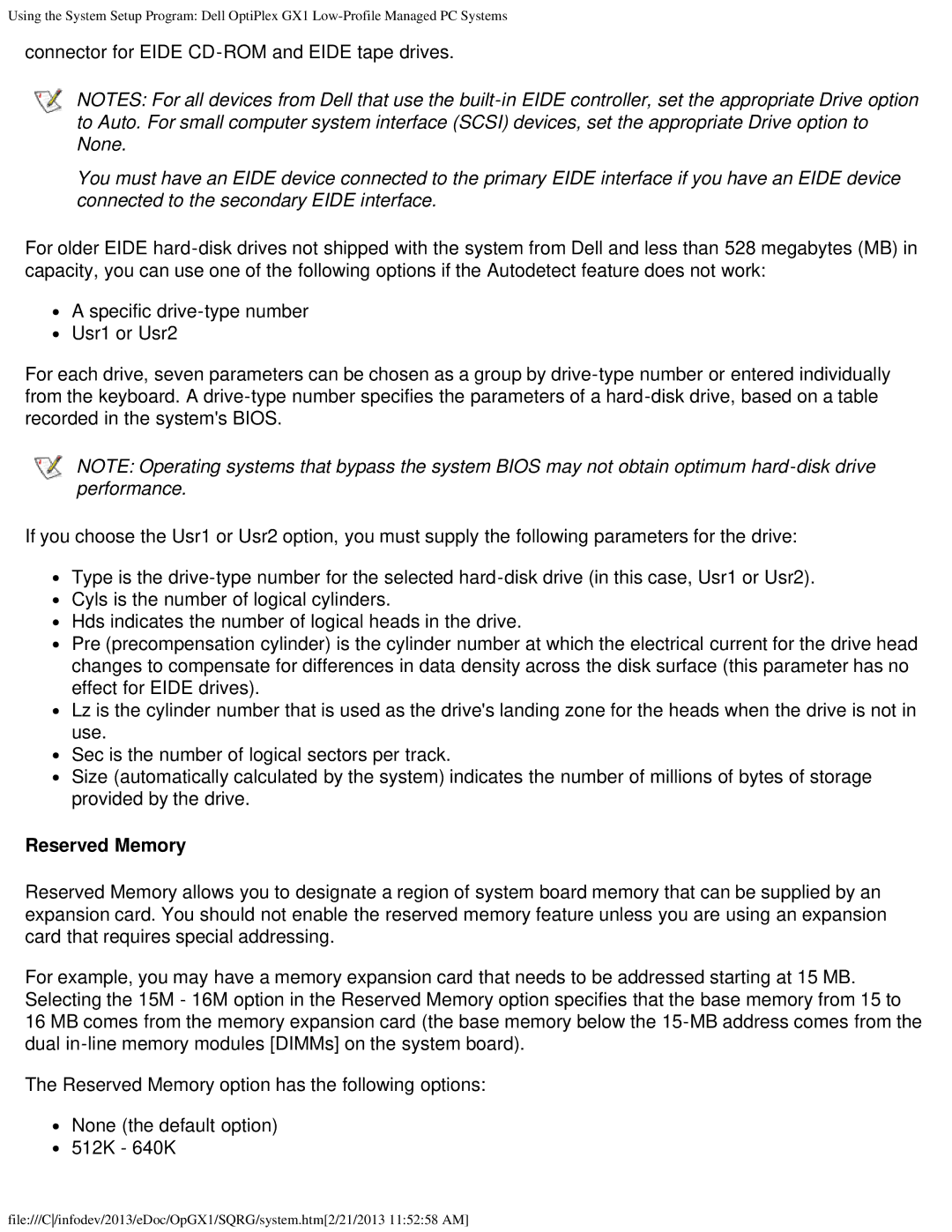Using the System Setup Program: Dell OptiPlex GX1
connector for EIDE
NOTES: For all devices from Dell that use the
You must have an EIDE device connected to the primary EIDE interface if you have an EIDE device connected to the secondary EIDE interface.
For older EIDE
A specific
Usr1 or Usr2
For each drive, seven parameters can be chosen as a group by
NOTE: Operating systems that bypass the system BIOS may not obtain optimum
If you choose the Usr1 or Usr2 option, you must supply the following parameters for the drive:
Type is the
Hds indicates the number of logical heads in the drive.
Pre (precompensation cylinder) is the cylinder number at which the electrical current for the drive head changes to compensate for differences in data density across the disk surface (this parameter has no effect for EIDE drives).
Lz is the cylinder number that is used as the drive's landing zone for the heads when the drive is not in use.
Sec is the number of logical sectors per track.
Size (automatically calculated by the system) indicates the number of millions of bytes of storage provided by the drive.
Reserved Memory
Reserved Memory allows you to designate a region of system board memory that can be supplied by an expansion card. You should not enable the reserved memory feature unless you are using an expansion card that requires special addressing.
For example, you may have a memory expansion card that needs to be addressed starting at 15 MB. Selecting the 15M - 16M option in the Reserved Memory option specifies that the base memory from 15 to
16 MB comes from the memory expansion card (the base memory below the
The Reserved Memory option has the following options:
None (the default option) 512K - 640K
file:///C/infodev/2013/eDoc/OpGX1/SQRG/system.htm[2/21/2013 11:52:58 AM]
